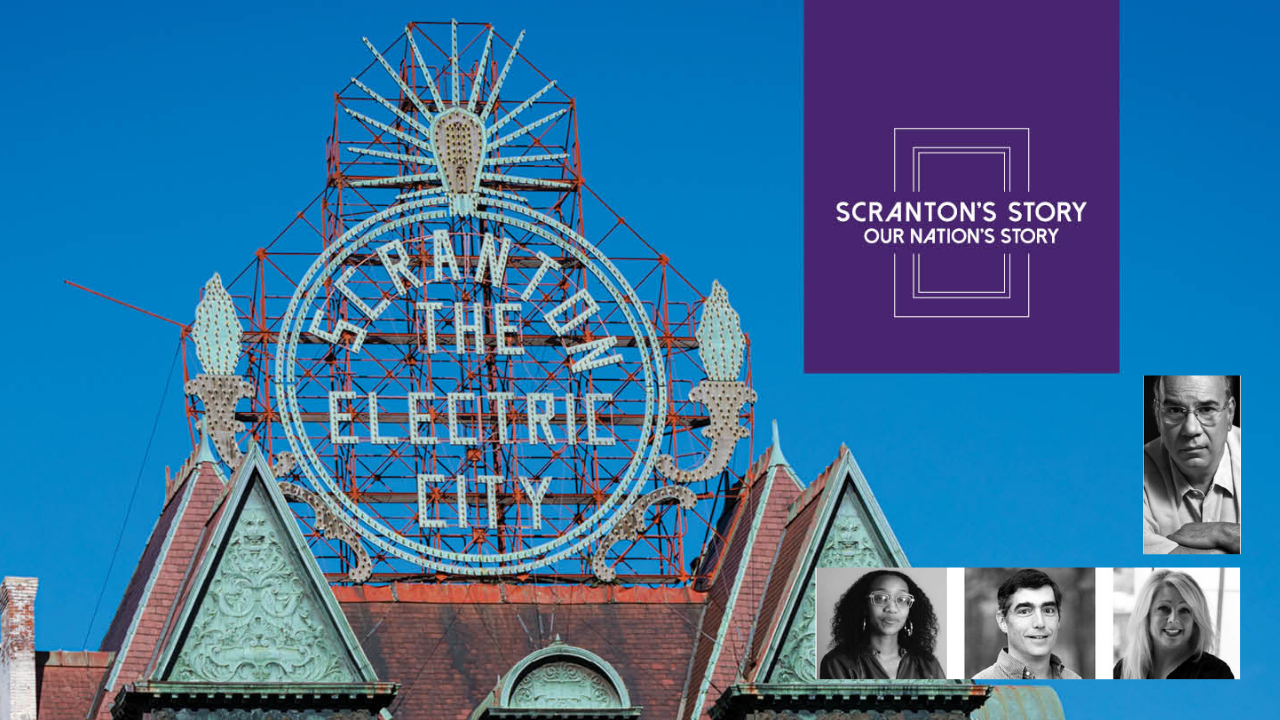Event Explores Perception of Scranton in Nation

Scranton is the hometown of the President of the United States, and the hometown of the father of a former First Lady. It is the location of the fictional Dunder Mifflin Paper Company in NBC’s The Office. It’s the where the Pennsylvania Polka started. It is also the place where anthracite coal was mined and where a miner’s strike in 1902 led to national labor reforms. Scranton is like Boston - only without the clams, if the description mentioned in an episode of HBO’s Sopranos is accurate. Scranton makes cameo appearances in the movie Home Alone and in the Harry Chapin song, 30,000 Pounds of Bananas.
On Tuesday, Oct. 19, a program will examine “Scranton in the Popular Imagination,” and consider how and if Scranton in the popular and national imagination reflects the Scranton of today. The event is the first public event of “Scranton’s Story, Our Nation’s Story,” a multi-year project led by The University of Scranton in collaboration with community partners, and supported through a grant from The National Endowment for the Humanities.
“Scranton in the Popular Imagination” features a talk by author and Scranton native Jay Parini, Ph.D., followed by a panel discussion with community leaders and University humanities faculty. The event, which begins at 7 p.m. on Oct. 19 at the Scranton Cultural Center, is offered free of charge. Reservations are required to attend and can be made at: surveymonkey.com/r/ImagineScranton. Additional events around this theme include a Jane Jacobs inspired walking tour on Oct. 23 at 1 p.m. in downtown Scranton.
An award-winning poet, biographer, fiction writer and educator, Dr. Parini is the Axinn Professor of English at Middlebury College in Vermont. He has written is volumes of poetry and biographies of John Steinbeck, Robert Frost and William Faulkner. His books include “The Last Station” about the last year in the life of Russian author Leo Tolstoy that was made into a film in 2009, which received two Oscar nominations. His most recent book is “Borges and Me: An Encounter,” published in 2020.
A graduate of West Scranton High School, Dr. Parini received an honorary degree from The University of Scranton in 2005 and was awarded the Weinberg Memorial Library’s Royden B. Davis, S.J., Distinguished Author Award in 2012.
Panelists for “Scranton in the Popular Imagination” are Joseph Kraus, Ph.D., professor and chair of the English and Theatre Department at the University; Glynis Johns, founder and CEO of the Black Scranton Project; and Maria MacDonald, executive director of the Center for the Living City. Hank Willenbrink, Ph.D., Theatre Program director and associate professor in the Department of English and Theatre at the University will moderate the panel and audience discussion.
“For the first set of events as part of this larger project, we thought we should begin at home and focus discussion around our identity. What makes Scranton unique? How does its portrayal match our lived experience? What does it mean to be a Scrantonian, as we look ahead to the 250th anniversary of the country? Authenticity and authentic portrayal are integral parts of any city’s ethos and our experience of where we live,” said Willenbrink, also a member of the project’s steering committee.
“Scranton’s Story, Our Nation’s Story” seeks to capture the unique narrative of Scranton and relate it to the history of the United States prior to the commemoration of the 250th anniversary of the United States. The project incorporates eight themes, starting with how Scranton has been portrayed in the popular imagination, and continuing to its industrial era growth, Indigenous history, religious tapestry, diverse immigrant populations – past and present – and the role it played in the Underground Railroad and Black history. Throughout, civic engagement, founding debates, and local and national identity will be explored by considering how the Scranton, and American, story may be understood anew 250 years later and the roles and responsibilities of local citizens.
The programs, which begin in Oct. 2021 and end in fall 2023, will involve lectures with question and answer interactive sessions, panel discussions with audience responses, public facilitated dialogues, and story exchanges, as well as walking and bus tours, youth writing workshops, and an oral history story collection that will provide new humanities material for discussion.
University offices coordinating the project include: Office of Community Relations, Schemel Forum, Slattery Center for the Humanities, and the Weinberg Memorial Library. Community organizations collaborating with the University on the project include: Black Scranton Project, Center for the Living City, Lackawanna County Arts and Culture Department, The Lackawanna Historical Society, Lackawanna County Immigration Inclusion Committee, Narrative 4, the Scranton Area Ministerium, United Neighborhood Centers of Northeastern Pennsylvania and WVIA.






